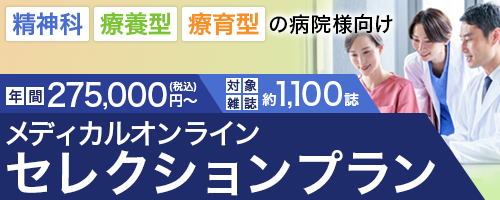アブストラクト
Japanese
| Title | 地域活動参加状況と主観的健康感の関連からみた介護予防事業参加高齢者の特徴 |
|---|---|
| Subtitle | 原著 |
| Authors | 柄澤美季*1, 玉浦有紀*2, 藤原恵子*3, 西村一弘*3,*4, 酒井雅司*5, 赤松利恵*6 |
| Authors (kana) | |
| Organization | *1お茶の水女子大学大学院人間文化創成科学研究科, *2新潟県立大学人間生活学部健康栄養学科, *3社会福祉法人緑風会緑風荘病院栄養室, *4駒沢女子大学人間健康学部健康栄養学科, *5社会福祉法人緑風会緑風荘病院内科, *6お茶の水女子大学基幹研究院自然科学系 |
| Journal | 栄養学雑誌 |
| Volume | 78 |
| Number | 5 |
| Page | 179-187 |
| Year/Month | 2020 / 10 |
| Article | 原著 |
| Publisher | 日本栄養改善学会 |
| Abstract | 【目的】地域活動参加頻度, 参加する活動の種類数を用いた地域活動参加状況と主観的健康感の組合せを用い, 介護予防事業参加高齢者の特徴を把握すること. 【方法】2018年6〜12月, 東京都東村山市の介護予防事業参加者に自記式質問紙調査を実施した. 解析対象は153人であった. 質問紙では, 地域活動参加状況, 主観的健康感, ソーシャルサポート種類数・満足度, 属性, 地域活動に関するセルフ・エフィカシーをたずねた. 地域活動参加状況と主観的健康感の組合せごとに, 参加者の特徴をχ2検定, Kruskal-Wallis検定で比較した. 【結果】頻度・種類数の少なくとも一方が高い者を参加高群, いずれも低い者を参加低群としたとき, 参加高・健康群は106人(69.3%)が該当した. 参加低・健康群(28人, 18.3%)は, 一人暮らしが多く(p=0.024), 参加高・健康群に比べ, ソーシャルサポート種類数は少ないが(p<0.001), その満足度には差はなかった. 参加高・不健康群(9人, 5.9%)は, 参加高・健康群に比べ, 地域活動に関するセルフ・エフィカシー得点が低かった(p=0.001). 【結論】地域活動への参加が多い者は, 参加が少ない者に比べ, 主観的健康感が高い者が多かったが, 地域活動への参加が少ない者でも健康だと感じる者が存在し, 地域活動参加状況と主観的健康感の組合せで特徴が異なった. |
| Practice | 栄養学 |
| Keywords | 高齢者, 社会参加, 主観的健康感, フレイル, ソーシャルサポート, elderly people, social participation, self-rated health, frailty, social support |
English
| Title | Characteristics of Elderly People Participating in Long-Term Care Prevention Project Based on Relationship Between Participation in Community Activities and Self-Rated Health |
|---|---|
| Subtitle | Original Article |
| Authors | Miki Karasawa*1, Yuki Tamaura*2, Keiko Fujiwara*3, Kazuhiro Nishimura*3,*4, Masashi Sakai*5, Rie Akamatsu*6 |
| Authors (kana) | |
| Organization | *1Graduate School of Humanities and Sciences, Ochanomizu University, *2Department of Health and Nutrition, Faculty of Human Life Studies, University of Niigata Prefecture, *3Department of Nutrition, Ryokufuso Hospital, *4Department of Health and Nutrition Sciences, Faculty of Human Health, Komazawa Women's University, *5Department of Internal Medicine, Ryokufuso Hospital, *6Natural Science Division, Faculty of Core Research, Ochanomizu University |
| Journal | The Japanese Journal of Nutrition and Dietetics |
| Volume | 78 |
| Number | 5 |
| Page | 179-187 |
| Year/Month | 2020 / 10 |
| Article | Original article |
| Publisher | The Japanese Society of Nutrition and Dietetics |
| Abstract | [ABSTRACT][Objective:] To examine the characteristics of elderly people who participated in care prevention projects, using a combination of the self-rated health and the status of participation in community activities by the frequency of participation and the number of types. [Methods:] We conducted a self-administered questionnaire survey for participants in long-term care prevention in Higashimurayama city, Tokyo, from June to December 2018. One hundred fifty-three elderly people completed the questionnaire. We asked about their status of participation in community activities, self-rated health, the number of types of social support, and satisfaction with social support, demographics, and self-efficacy of community activities. We examined the characteristics of participants for each combination of the status of participation in community activities and self-rated health using the chi-squared test and the Kruskal-Wallis test. [Results:] There were 106 (69.3%) participants in the high participation and healthy group. Many people in the low participation and healthy group (n=28, 18.3%) lived alone (p=0.024). This group had a smaller number of types of social support than the high participation and healthy group (p<0.001), but there was no significant difference in their satisfaction. The high participation and unhealthy group (n=9, 5.9%) had lower self-efficacy than the high participation and healthy group (p=0.001). [Conclusions:] Those who more participated in community activities had higher self-rated health, but some of those who less participated also had high self-rated health. The characteristics differed depending on the combination of participation in community activities and self-rated health. |
| Practice | Nutrition |
| Keywords | elderly people, social participation, self-rated health, frailty, social support |
- 全文ダウンロード: 従量制、基本料金制の方共に770円(税込) です。
参考文献
- 1) 日本老年医学会: フレイルに関する日本老年医学会からのステートメント, https://www.mhlw.go.jp/file/05-Shingikai-10901000-Kenkoukyoku-Soumuka/0000209576.pdf (2020年7月14日)
- 2) World Health Organization: Constitution of the world health organization, http://apps.who.int/gb/bd/PDF/bd47/EN/constitution-en.pdf?ua=1 (2020年7月14日)
- 3) 藤原佳典: 地域高齢者における社会的フレイルの概念と特徴 〜社会的側面から見たフレイル〜, 日本転倒予防学会誌, 3,11-16 (2017)
- 4) World Health Organization: Active ageing: a policy framework, http://apps.who.int/iris/bitstream/handle/10665/67215/WHO_NMH_NPH_02.8.pdf?sequence=1 (2020年7月14日)
- 5) Hornby-Turner, Y.C., Peel, N.M., Hubbard, R.E.: Health assets in older age: a systematic review, BMJ Open, 7,1-13 (2017)
残りの27件を表示する
- 6) 平野美千代: 日本の「高齢者の社会活動」: 概念分析, 日本保健科学学会誌, 14,121-128 (2011)
- 7) 中村好一, 金子 勇, 河村優子, 他: 在宅高齢者の主観的健康感と関連する因子, 日本公衆衛生雑誌, 49,409-416 (2002)
- 8) 金 貞任, 新開省二, 熊谷 修, 他: 地域中高年者の社会参加の現状とその関連要因 -埼玉県鳩山町の調査から-, 日本公衆衛生雑誌, 51,322-334 (2004)
- 9) Tomioka, K., Kurumatani, N., Hosoi, H.: Social participation and the prevention of decline in effectance among community-dwelling elderly: a population-based cohort study, PLoS One, 10,1-13 (2015)
- 10) Ponce, M.S.H., Rosas, R.P.E., Lorca, M.B.F.: Social capital, social participation and life satisfaction among Chilean older adults, Rev. Saude Publica, 48,739-749 (2014)
- 11) 大西恵理, 後閑容子, 石原多佳子: 中壮年期のソーシャルキャピタルの構成要素と地域共生意識との関連, 日本公衆衛生看護学会誌, 5,37-46 (2016)
- 12) Glanz, K., Rimer, B.K., Viswanath, K.: Health behavior: theory, research, and practice, 5th ed., pp.205-222 (2015) Jossey-Bass, CA
- 13) 鹿瀬島岳彦, 田高悦子, 田口理恵, 他: 健康長寿に向けた大都市在住自立高齢者における主観的健康感と関連要因の検討, 日本地域看護学会誌, 17,23-29 (2015)
- 14) Kanamori, S., Kai, Y., Aida, J., et al.: Social participation and the prevention of functional disability in older Japanese: the JAGES cohort study, PLoS One, 9,1-10 (2014)
- 15) House, J.S.: Work stress and social support, pp.23-25 (1981) Addison-Wesley, Massachusetts
- 16) 松井美帆: 介護予防サービス利用者の自律性とソーシャルサポートとの関連, 厚生の指標, 64,8-13 (2017)
- 17) 東村山市: 東村山市年齢別人口調べ (令和2年7月1日), https://www.city.higashimurayama.tokyo.jp/kurashi/koseki/matibetunennreibetu.files/20200701_nenreibetu.pdf (2020年7月14日)
- 18) 東村山市第5次地域福祉活動計画策定委員会事務局; 東村山市社会福祉協議会: 東村山市第5次地域福祉活動計画, http://www.hm-shakyo.or.jp/assets/files/5thkatudoukeikaku.pdf (2020年7月14日)
- 19) 藤原恵子, 西村一弘, 玉浦有紀, 他: 管理栄養士による病院型栄養ケア・ステーションと地域包括支援センターとの連携事例報告, 日本栄養士会雑誌, 60,515-519 (2017)
- 20) 艾 斌, 星 旦二: 高齢者における主観的健康感の有用性に関する研究 日本と中国における研究を中心に, 日本公衆衛生雑誌, 52,841-852 (2005)
- 21) 山内加奈子, 斉藤 功, 加藤匡宏, 他: 地域高齢者の主観的健康感の変化に影響を及ぼす心理・社会活動要因 5年間の追跡研究, 日本公衆衛生雑誌, 62,537-547 (2015)
- 22) 児玉小百合, 栗盛須雅子, 星 旦二, 他: 沖縄県の農村地域における健常な高齢者の主観的健康感に対する認知的要因と食品摂取の多様性との関連構造, 日本栄養・食糧学会誌, 69,151-162 (2016)
- 23) 岡本秀明, 岡田進一, 白澤政和: 大都市居住高齢者の社会活動に関連する要因 身体, 心理, 社会・環境的要因から, 日本公衆衛生雑誌, 53,504-515 (2006)
- 24) 青木邦男: 在宅高齢者の孤独感とそれに関連する要因: 地方都市の調査研究から, 社会福祉学, 42,125-136 (2001)
- 25) 瀧澤 透, 崎原盛造, 名嘉幸一, 他: 秋田県一農村における高齢者のソーシャルサポートと健康, 居住形態, および主観的幸福感との関連について, 民族衛生, 70,18-30 (2004)
- 26) 岩瀬信夫, 池田貴子: Duke social support index 日本語版(DSSI-J) の開発, 愛知県立看護大学紀要, 14,19-27 (2008)
- 27) 小塩真司, 阿部晋吾, カトローニピノ: 日本語版 Ten item personality inventory (TIPI-J)作成の試み, パーソナリティ研究, 21,40-52 (2012)
- 28) Tadaka, E., Kono, A., Ito, E., et al.: Development of a community's self-efficacy scale for preventing social isolation among community-dwelling older people (mimamori scale), BMC Public Health, 16,1-9 (2016)
- 29) 内閣府: 第1章高齢化の状況 第1節高齢化の状況 6 高齢化の社会保障給付費に対する影響, 令和元年版高齢社会白書 (全体版), https://www8.cao.go.jp/kourei/whitepaper/w-2019/zenbun/pdf/1s1s_06.pdf (2020年7月14日)
- 30) 浜田麻里奈, 飯田晶子, 横張 真: 高齢者の健康維持に対する農の活動の影響 -個人活動と集団活動の違いに着目して-, 都市計画論文集, 51,1024-1029 (2016)
- 31) 赤塚永貴, 有本 梓, 田高悦子, 他: 都市部地域在住高齢者の主観的健康感に関連する要因の性差に関する比較, 日本地域看護学会誌, 19,12-21 (2016)
- 32) 青木邦男: 在宅高齢者の社会活動性に関連する要因の共分散構造分析, 社会福祉学, 45,23-34 (2004)



